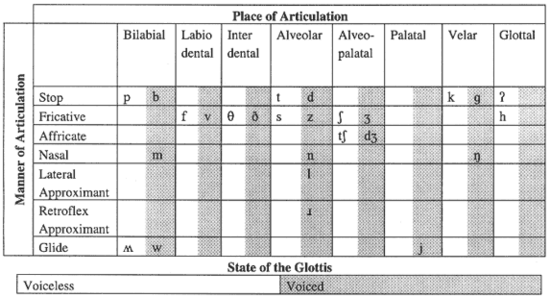Zelda Wiki:Pronunciation Guide
Jump to navigation
Jump to search
Key
These are the keys for IPA and English pronunciation respelling, an alternative to IPA that does not represent dialects or accents.
- To display a formatted English pronunciation respelling when defining pronunciation, use Template:Respell.
|
| ||||||||||||||||||||||||||||||||||||||||||||||||||||||||||||||||||||||||||||||||||||||||||||||||||||||||||||||||||||||||||||||||||||||||||||||||||||||||||||||||||||||||||||||||||||||||||||||||||||||||||||||||||||||||
Using IPA for Standard American English
IPA, as it applies to Standard American English, consists of only a fraction of the symbols available in IPA.
Some Helpful Rules
Here are a few tips to get you started. Always remember the following while using IPA.
- First and foremost is not to rely on existing notions of how a word is spelled. Take a moment to review the following examples and note how the spelling in English is drastically different from the spellings in IPA.
- Picture
- Leisure
- Portion
- Caught
- Context
- Fight
- Each syllable needs at least one vowel.
- Approximants modify vowels around them.
- The symbols ə and ʌ are both Central-Mid vowels. The difference is that the ʌ is used in the stressed syllable.
- Butter
Glossary
- Articulators: Speech organs involved in making a sound, such as the lips, teeth, and tongue.
- Voiced: A sound in which the vocal cords vibrate. Examples are /v/, and /ð/ as in These. Note that the use of articulators in these examples are exactly the same as in the voiceless examples below, but the vocal cords vibrate.
- Voiceless: A sound in which the vocal cords do not vibrate. Examples are /f/, and /θ/ as in teeth. Note that the use of articulators in these examples are exactly the same as in the voiced examples above, but the vocal cords do not vibrate.
- Manner of Articulation: How articulators are involved in making a sound make contact. In Standard American English, there are only seven.
- Places of Articulation: Where an obstruction occurs in the vocal tract between an active articulator (typically part of the tongue) and a stationary articulator (typically part of the roof of the mouth). In Standard American English, there are only eight.
Classifications
Consonants:

- Manner of Articulation:
- Stops: A consonant sound produced by stopping the airflow in the vocal tract. The sound is produced at, and cannot be made after, the initial expulsion of air.
- Fricatives: Sounds produced by forcing air through a narrow channel made by placing two articulators close together. Examples of these are /f/ (produced by joining the teeth and lip) and /θ/ (produced by joining the teeth and tongue).
- Affricates: Consonants that begin as stops but release as a fricative.
- Nasals: A sound produced in the nose, where the oral cavity acts as a resonance chamber for the sound but the air does not escape through the mouth.
- Approximants: Speech sounds in which the articulators approach each other but not narrowly enough to create turbulent airflow.
- Glides (Semivowels): A sound that is phonetically equivalent to a vowel sound but functions as the syllable boundary.
- Places of Articulation:
- Bilabial: A consonant articulated with both lips.
- Labio dental: A consonant articulated with the lower lip and the upper teeth.
- Inter dental: A consonant produced by placing the blade of the tongue against the upper incisors.
- Alveolar: A consonant articulated with the tongue against or close to the superior alveolar ridge.
- Alveo-palatal: A consonant articulated with the blade of the tongue behind the alveolar ridge, and the body of the tongue raised toward the palate.
- Palatal: A consonant articulated with the body of the tongue raised against the middle part of the roof of the mouth.
- Velar: A consonant articulated with the back part of the tongue against the back part of the roof of the mouth.
- Glottal: A consonant articulated with the glottis.
Vowels:

- Classifications:
- High, Mid, and Low: The vertical position of the tongue relative to either the roof of the mouth.
- Front, Central, and Back: The position of the tongue during the articulation of a vowel relative to the back of the mouth.
- Rounded and Unrounded: Whether or not the lips are rounded.